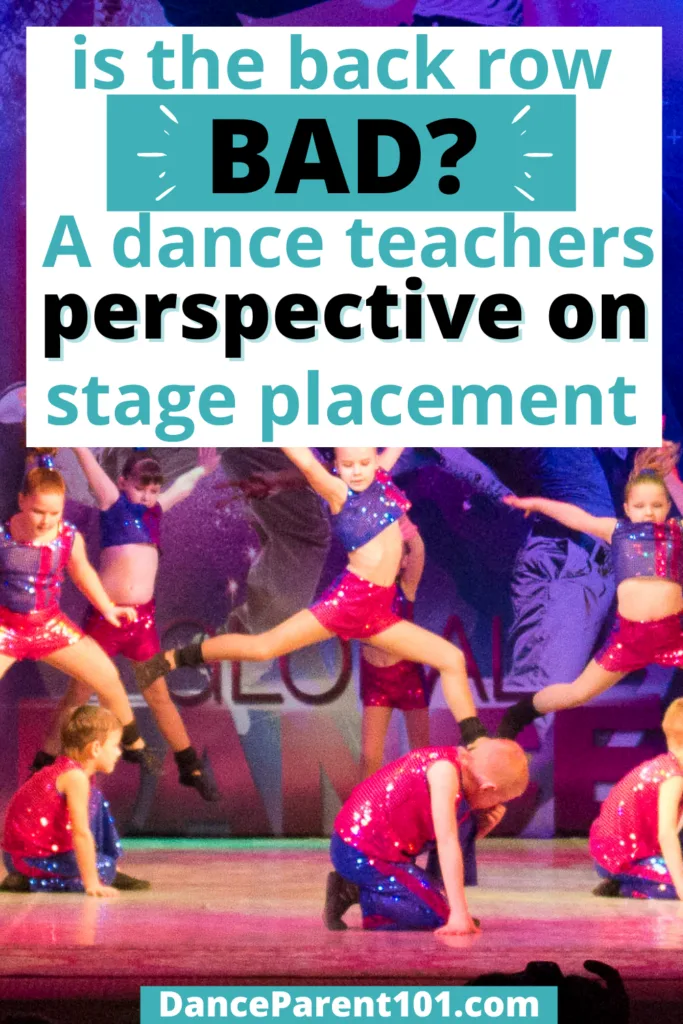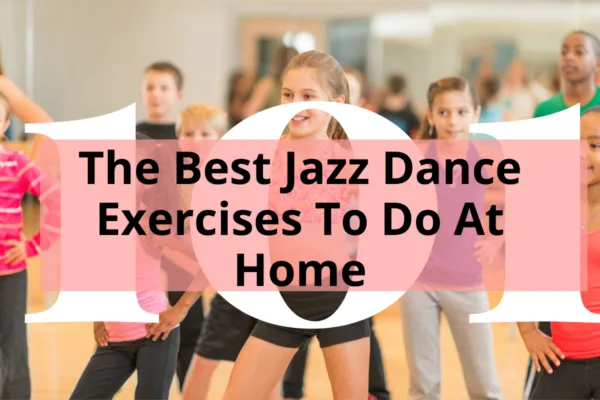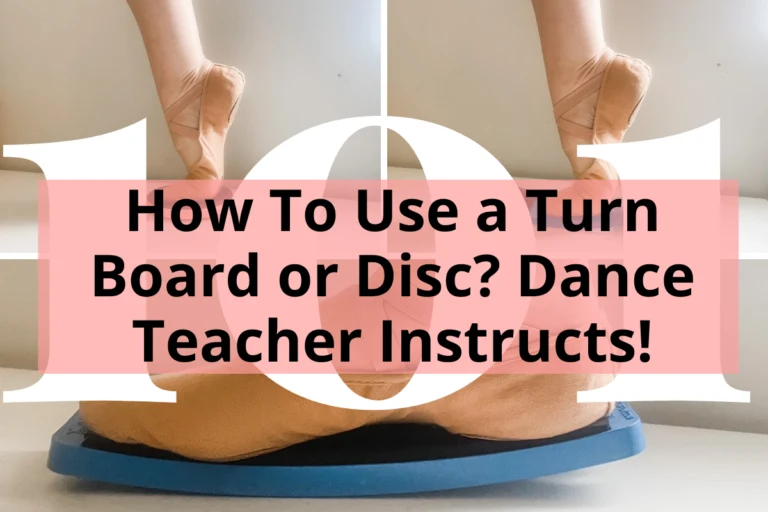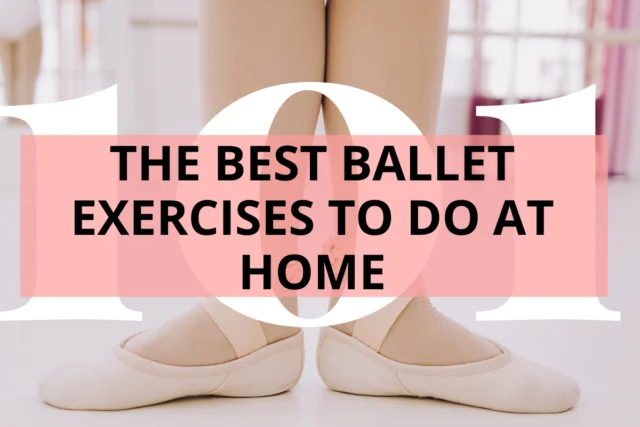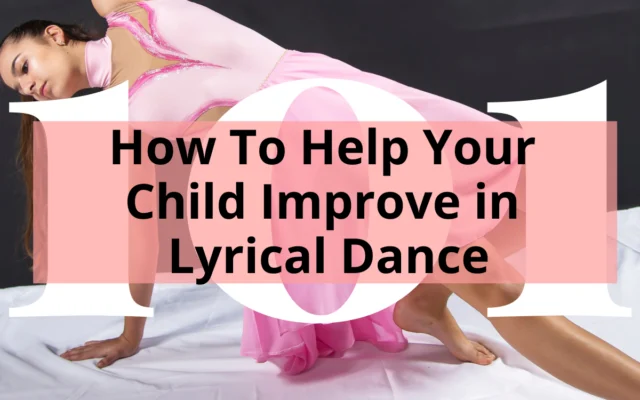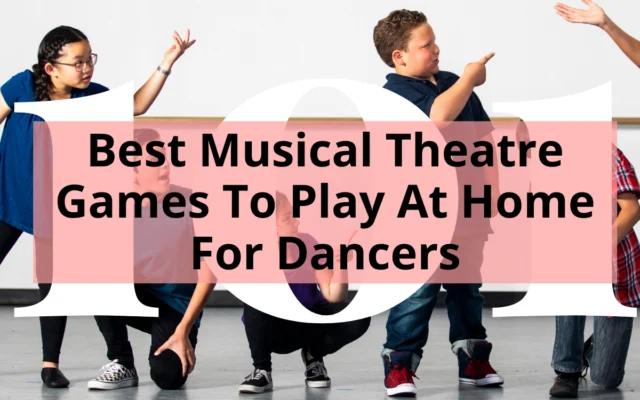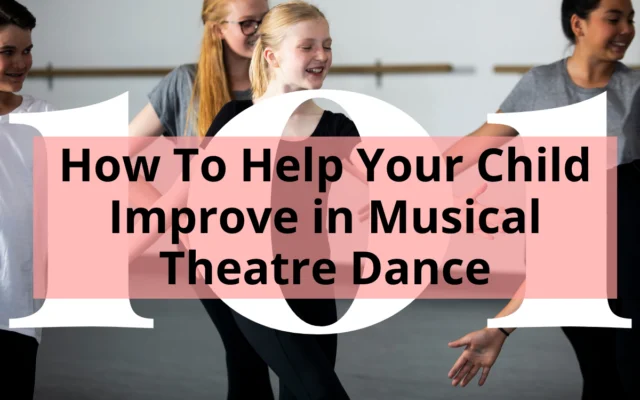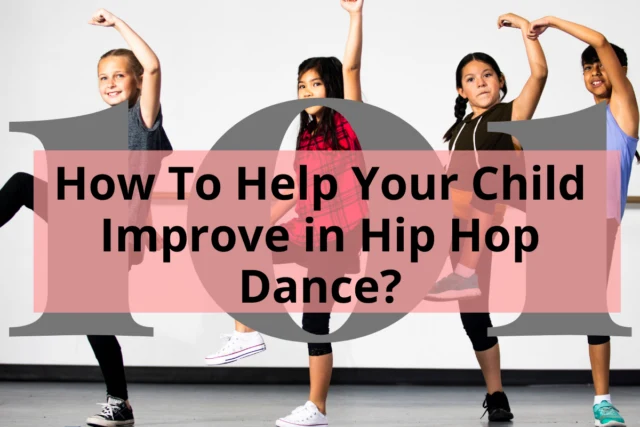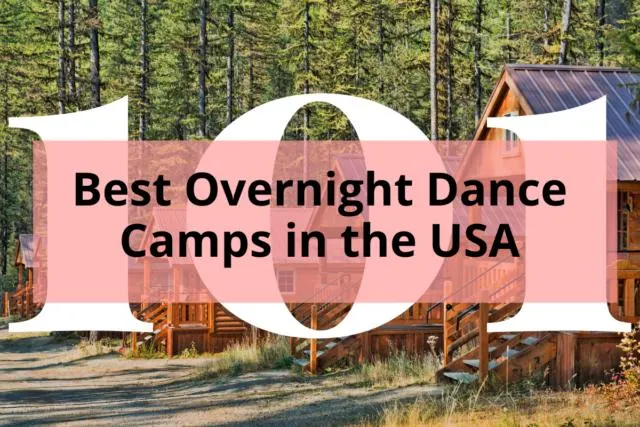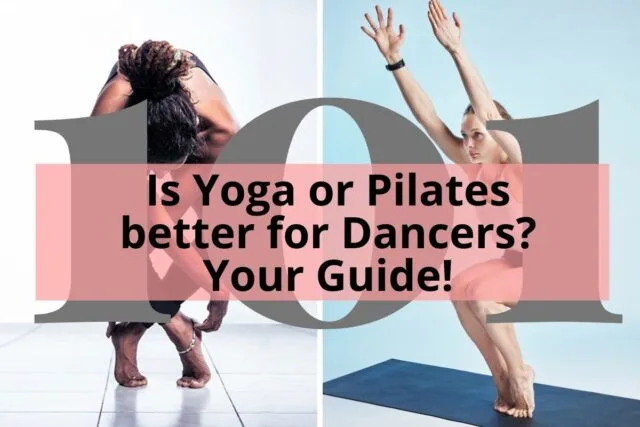By Lesley Mealor / Edited by Samantha Bellerose, B.Ed, Dip.Dance(Performing Arts)
Dancing in a group means that sometimes you won’t always be in the front. It’s just the nature of group activities! But, what does it mean if your dancer is consistently placed in the back row? How do teachers choose who to place where on stage? Is being in the back row in a dance routine bad?
No, the Back Row in a dance routine is not bad. When considering stage placement, teachers use a variety of methods to place dancers. Often ability has very little to do with it, and instead, teachers consider things like height, retention ability, and stage presence.

It’s understandable to want to know what stage placements mean for your dancer. In order to truly understand, however, you need to know what the stage positions are, why some placements aren’t as bad as they seem, and how to help your dancer if they seem to always be placed in the back.
If you’re concerned with where your dancer is being placed on stage, you’ve come to the right place!
Understanding The Stage Positions
In the dance world, the way a dance routine is staged refers to where the dancers are placed on stage, and how the formations of dancers move and change throughout a dance. In order to understand staging, you need to be familiar with the basic stage directions that are used in dance and in theatre.
Stage Right and Stage Left
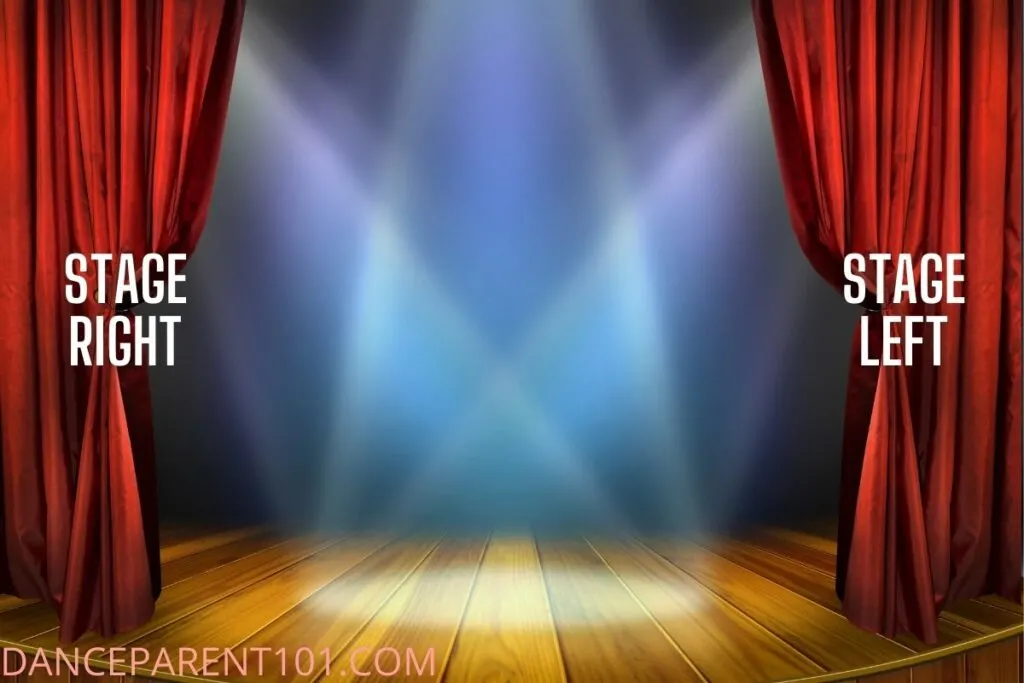
When looking head on at a stage from the audience, or the “house”, we refer to the right side of the stage as Stage Left. The left side of the stage is Stage Right. When you stand on a stage facing the audience, to the left of you is still Stage Left and to the right is still Stage Right.
Centre, Centre Right and Centre Left

Center Stage is exactly that, the center of the stage. To the right and left of center are Center Right and Center Left.
Upstage and Downstage
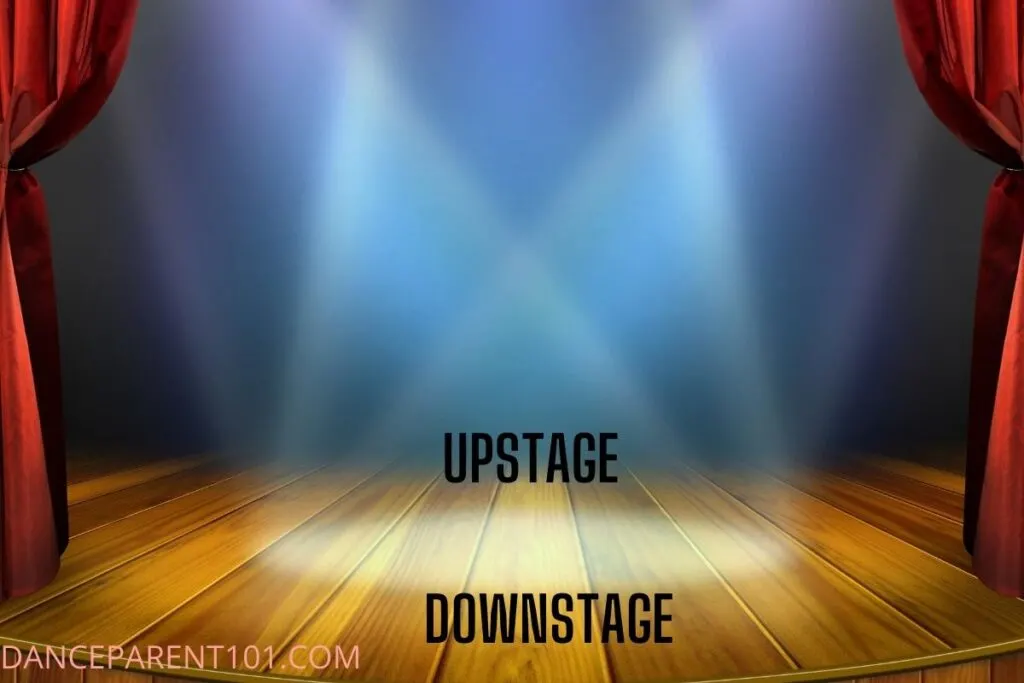
The front of the stage is called Downstage and the back of the stage is called Upstage. Confused yet?
In early days of theatre and dance, stages were slanted so that the back of the stage was higher than the font, which is known as a “raked” stage. Since the back was higher, that area was deemed “Upstage”, and the lower half was “Downstage”.
These days, you don’t often see raked stages, as the change in elevation is hard on dancers’ bodies, but the terminology is consistent around the world. If your dancer doesn’t know stage directions, now is the time to learn!
What Certain Stage Positions Mean For Dancers

Parents often wonder if placement in a certain spot on stage means anything. As a dance teacher, I’m here to tell you that many times, it has nothing to do with anything! Truly!
That is, until it does.
You see, I’m the type of teacher who is willing to give everyone a chance to be in the front regardless of initial ability.
However, if a dancer has been given a high-profile placement in a routine, they have to prove to me throughout the rehearsal process that they can handle that responsibility. As you will see, some stage positions require a greater or lesser level of confidence and leadership, and it’s my job as a teacher to know which of my students can handle those positions. If you want some tips on how to help you dancer improve check out our articles here.
When speaking about the following placements, I’m considering dance routines that use primarily several straight lines as formations as in the images. We will cover more intricate formations and placement later in this article.
Front and Center – Correctly termed as Downstage Center
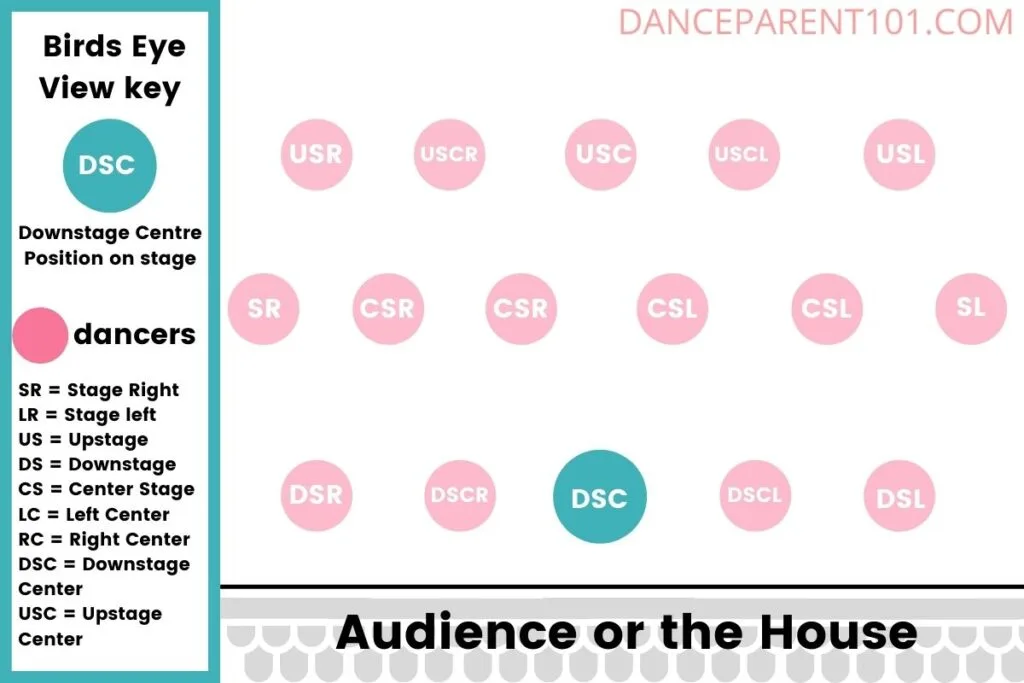
Downstage center is clearly the most coveted spot for a dancer in a group routine. It is also a spot with the most responsibility, meaning that the rest of the group will rely on that dancer to keep spacing consistent, both side to side and front to back, and to be a leader in remembering the routine.
The downstage center dancer has no one else to look to if she forgets the steps. Therefore, I need my downstage center dancer to have a great memory, confidence in herself to be a leader, and excellent showmanship. Do I need her to be the very best dancer in the class? Nope. But is the very best dancer in the class also usually the one with a great memory, true confidence and excellent performance quality? Yes.
Center Back – Correctly termed as Upstage Center
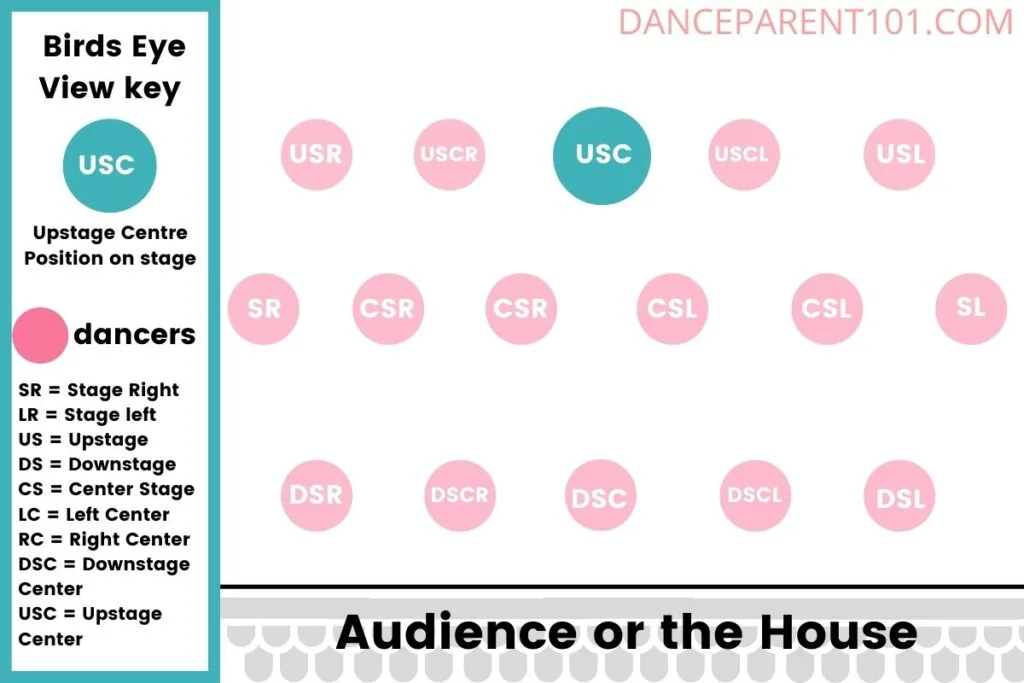
My upstage center dancer is quite frankly usually my tallest dancer. Being the smallest dancer in my youth (and in my adulthood), I was always in the front solely because I wouldn’t be seen otherwise, and my tall dance friends typically spent much of their time in the “back row”. They weren’t the worst dancers by any means – but height does come into play for dance just as it does for group pictures or choir. You can read more about the height debate in dance in our article Tall dancers vs. Short dancers: What’s the height debate about?
Upstage center is actually a great place to be if you are a taller dancer because you can be seen with no problem, and have less pressure to be the leader. Additionally, if the routine is being performed in an arena or a large theatre with a balcony, the audience has a much easier time seeing that dancer in full because of the added distance that comes with the dancer being far upstage.
Dancers who are placed upstage center can also fall into one of two categories for me as a choreographer. Sometimes, they’re my weakest dancer, and I place them there because there are the most opportunities for them to watch others if they forget the routine. Other times, it’s one of my strongest dancers, because as a dance competition judge, I look to the back row first to see who is hiding.
Strong choreographers know how to integrate all of their dancers into a routine, and don’t just hide their weakest dancers in the back. If I see a full back row of weak dancers, including the upstage center dancer, I am concerned that the choreographer hasn’t done her due diligence to include everyone in an equitable manner.
The Front Row – Correctly termed as Downstage Left or Downstage Right
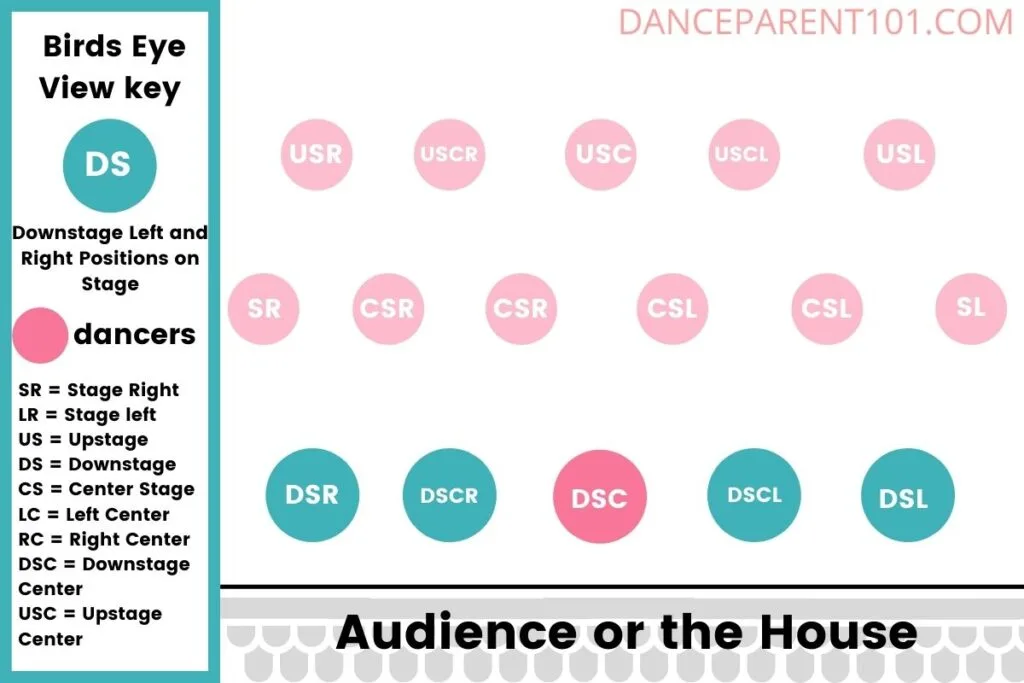
The sides of the stage can sometimes feel like a challenging place to dance. There is always the chance that the stage is small and those dancers end up dancing in the wings. Unfortunately, that does happen and there is not much to be done about it. However, dancers on these two sides are important pieces of formations.
My downstage dancers are important because, like their friend in the center, they also bear responsibility for being confident in knowing the routine, and having great performance quality. These are dancers that I trust to remember the dance, be consistent in their spacing, and dance the routine full out even if they’ve ended up off stage in the wings.
Center Left or Center Right

As a center left or center right placed dancer, you are expected to literally hold the formation in place as the routine moves around the stage. These dancers help create the outline of the formation and keep it consistent if they’re thoughtful about how big or small the steps should be.
These dancers also run the risk of traveling off stage as they dance, but because they are neither front or back of the formation, this is a relatively safe place to dance. This placement is usually reserved for my dancers who may not have all the confidence and performance quality of my downstage dancers, but who show me that they are hard workers who want to get better.
The Back Row – Correctly termed as Upstage Left or Upstage Right
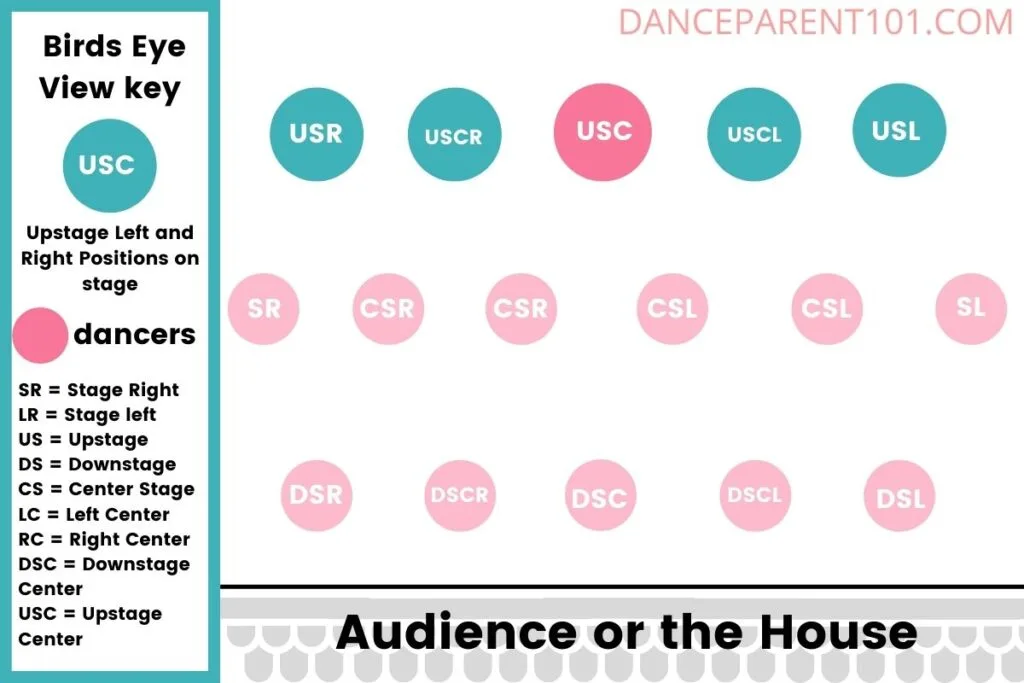
My upstage left and right dancers can be a combination of many types of dancers. In all placements, I need leaders, so these placements can include a few leaders who I trust to know the dance well. Additionally, upstage left and right dancers can include those who have expressed through words or actions that they do NOT want to be in the front. This is a very real situation that happens often – some dancers love to dance, but do not love being the center of attention. Upstage right or left is a perfect placement for these folks.
And, of course, upstage right and left placements are often used for dancers who are weaker in ability or in remembering choreography. These places on the stage offer these dancers the opportunity to watch their peers in front when there is no more mirror, and can mask mistakes.
If you are wanting some tips on how to help your dancer move from being consistently placed upstage, check out my article on tips to help your dancer improve if they are always in the back row here.
Dancer Placement in Other Formations
These days, more and more choreographers and dance teachers are doing away with basic straight lines for all but the youngest and most beginner dancers and are leaning towards using more interesting and equitable formations. This choice allows for more dancers to be seen and have their “time to shine”. The beauty of dance is that the creativity is unlimited in terms of formations.
What Kinds of Formations Do Dance Teachers Use?

A creative and thoughtful choreographer will utilize a variety of formations in a routine that showcases everyone’s talents. In a single routine, you may see formations including multiple horizontal lines going both side to side and front to back, diagonal lines, triangles, circles, clumps – the possibilities are truly endless, not to mention many of these formations can also travel, allowing even more dancers to be seen.
By using so many formations, choreographers can realize their vision and provide many opportunities for dancers to be in multiple placements around the stage. In addition to formations, choreographers also incorporate levels – meaning, the physical level of the dancers. By creating levels, more dancers can be seen more often and choreographers can showcase dancers in multiple ways.
As you can see, there are pros and cons to being placed in every position on stage in a dance routine. If your dancer has been placed in the back row, be sure to remind them (and yourself) that the back row is not all that bad! What matters the most is that they’re having fun, and that you support them no matter where they are in the formation.
FURTHER READING
Share this article on Pinterest Now!
